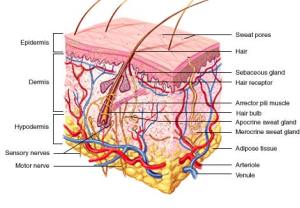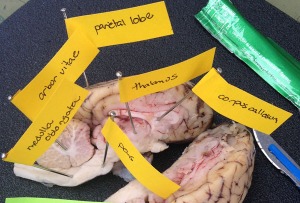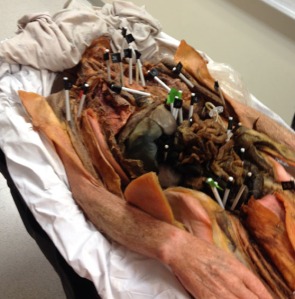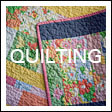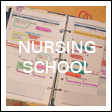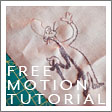(warning: cadaver image in this post is likely not work or child friendly)
About 30 minutes into Anatomy & Physiology 1 I texted my doctor sister-in-law, “Does this ever get less gross?” and instead of the reassuring “of course!” response I was expecting, she asked “What do you think is gross?”
This. This was what was threatening my lunch.
She was a little concerned about my ability to make it through the ‘grosser’ things ahead.
For the record, I still find this pretty stinking gross. But the good news is that yes, yes it does get better.
And I think that’s important to say. I think there’s this quiet idea that if you think this stuff is gross, you don’t belong in medicine. But I don’t believe that. I think if you’re going into nursing because you love PEOPLE, you might not love standing over a person that has been cut into pieces. And that’s okay.
So anyway, yes, I was grossed out by EVERYTHING in the beginning. Including this diagram of skin. But it gets better. And it’s not so much that I think it’s completely the opposite of gross (because if I really look at that diagram and think about how that is IN ME it still makes me want to die a little bit) but I learned to put up barriers. Instead of seeing these types of diagrams and thinking “oh my gosh–that’s going on ALL OVER ME RIGHT NOW” it’s purely an academic exercise. “That is skin. Must learn those layers and their functions. Don’t need to think beyond that.”
I took A&P 1 online, and one of the biggest differences between taking A&P online and A&P in person is the lack of a cadaver. While the zillion dollar lab kit includes a mini model skeleton (most expensive Halloween decoration I’ll ever own), sheep brain, and cow eyeball, you don’t gain experience with human body parts. Here’s an example of a lab from the online A&P 1 that involved dissecting a sheep’s brain:
So while I had learned how to cope with A&P 1, when I took A&P 2, I had to learn to figure out how to function in the presence of a cadaver.
It was a shocking experience for me. They bring in the cadaver on a stretcher in a body bag and you’re sitting there thinking “there is currently a dead person in the corner” and then they open the bag and begin taking off panels. It is like those lift-the-flap books from your childhood, only the horror movie version. It gets better once they cover the face with a sheet, but odds are that if you are going into medicine because you like people and not because you’re a psychopath, your brain is going to be doing this: “AHHHHHHHHHHHHHHHHHHHHHHHHHHHHHHH! THERE IS A DEAD CHOPPED UP PERSON HERE! I DO NOT UNDERSTAND WHY SCREAMING IS THE SOCIALLY UNACCEPTABLE RESPONSE RIGHT NOW!”
In my case, this basic response lasted for five weeks. It is very very difficult to learn anything when your inner dialogue is doing this on loop: “Don’t scream. Are you screaming? No? Okay. Wait–what is your face doing? Do you look horrified right now? STOP THAT. You are a professional. Lock this up. Make a normal face. Wait. What is a normal face? Oh my God I can’t remember what my face normally feels like when it’s not being horrified. Think. Look thoughtful. Like you’re learning. Wait–what would Joey do when he was trying to listen to medical dialogue? Smell the fart acting. Yes, do that. Wait–no. Don’t BREATHE. Now it is IN YOU. Oh my God tiny parts of a dead person are now inside you. Oh no. Looking horrified again. Is anyone looking? WHATEVER YOU DO MAKE A NORMAL FACE.”
I think this is normal. (or within the normal spectrum.) I think it’s the response of compassionate people who haven’t yet disassociated Bodies from People.
If you’re early on in your journey and trying to prepare for what a pin test/practical exam looks like, here is a photo from a mock practical (this was for practice, so it had more pins than you might normally see–normally at my school they try to pin it so that you don’t have to move any structures to see other pins):
And then suddenly all it got better. I look at this picture and I see structures and functions and I don’t even have to worry about what my face is doing. For me, things got better with the actual first practical exam on the cadaver. Because finally there was no hanging back, there was no ‘I’ll look that up on my anatomy app from the safety of my own desk later.’ It was “I must figure out what that structure is and I must do it now even if it means I have to touch the inside of that body.” And like magic, the spell was broken. The only fear left was the fear of a bad grade. And like the diagram, this was no longer a “dead person” to me but a “cadaver” that I simply needed to get an A on.
I think it’s an interesting part of the training that goes far beyond simply learning what human structures look like–I think there’s an intentional disassociating bodies from people that goes on here, and I almost mourn the loss of my old innocence. But for all of you starting your nursing pre-requisite journey and wondering if A&P is survivable if you hate the idea of working with cadavers when everyone else around you is proudly announcing how not impacted they are by all of this, the answer is yes. If I got past it, I know anyone can!


